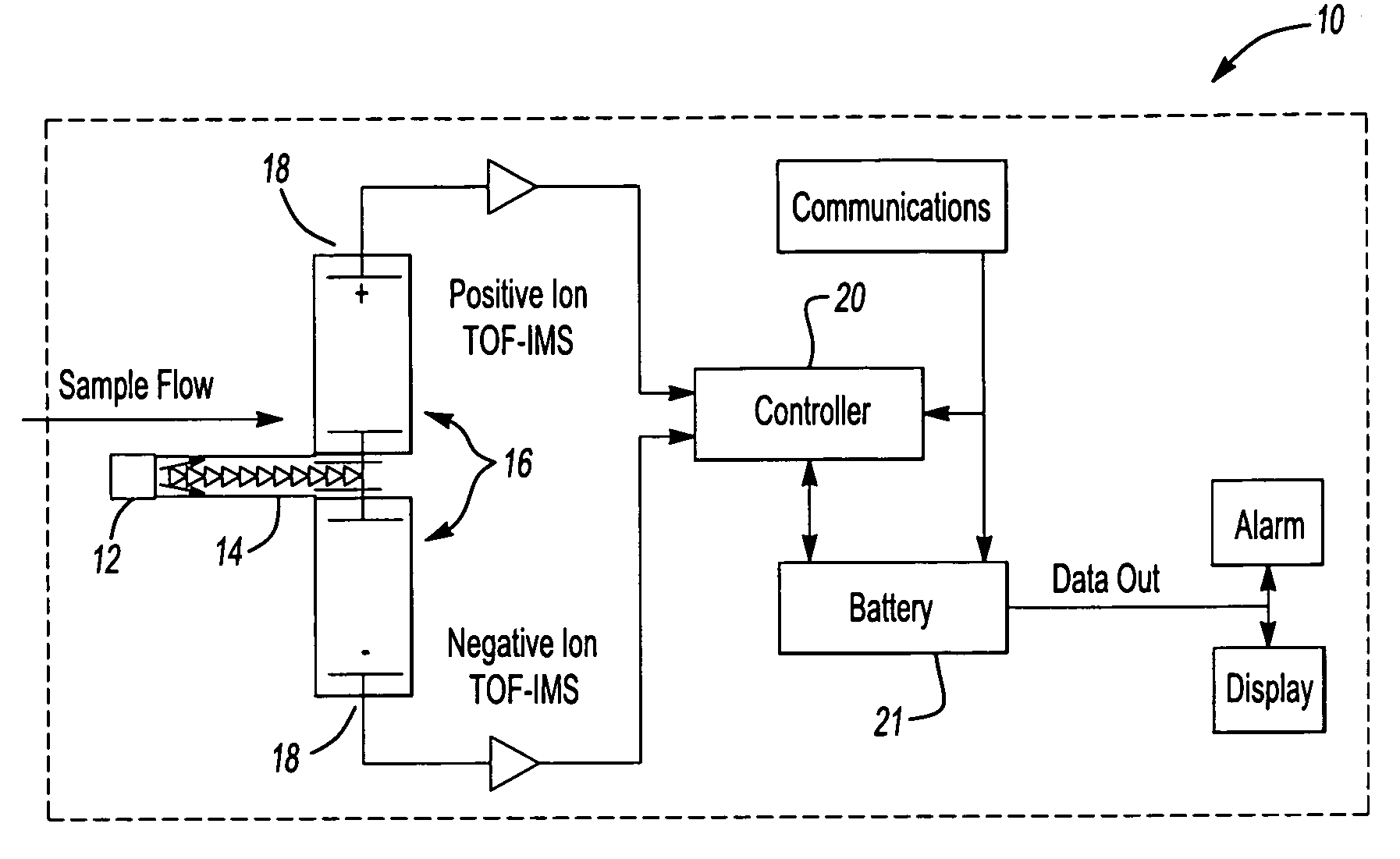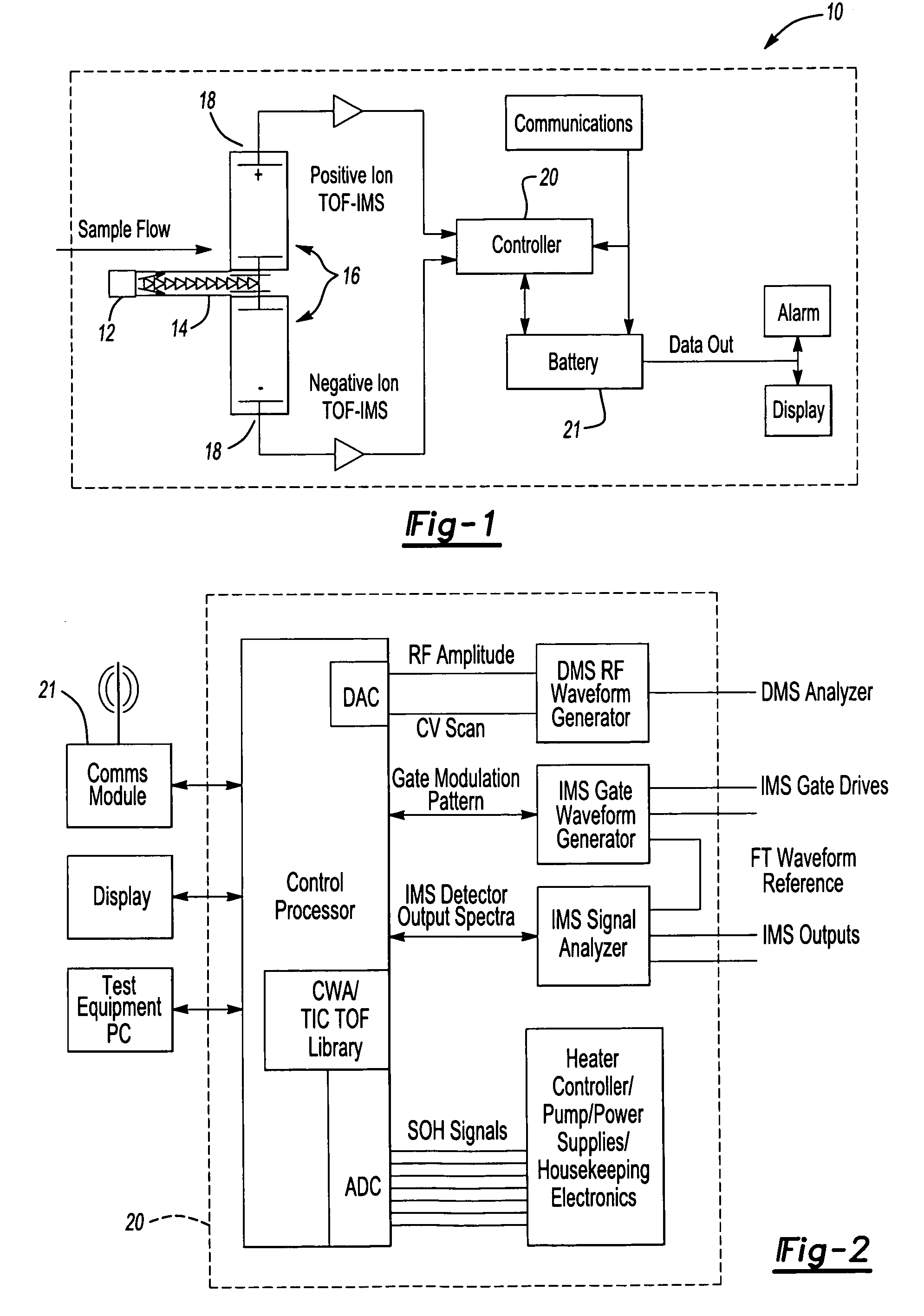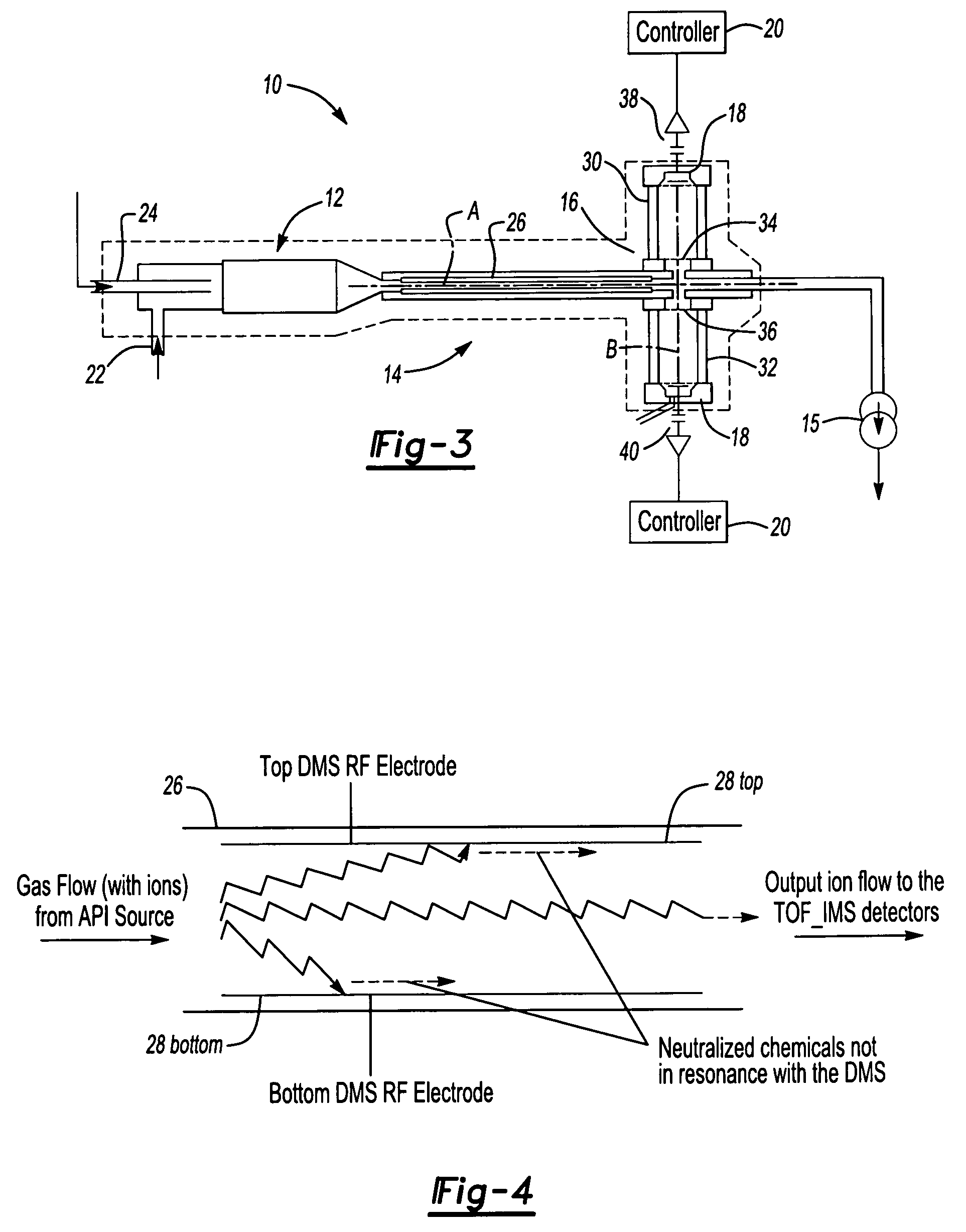Tandem differential mobility ion mobility spectrometer for chemical vapor detection
a spectrometer and ion mobility technology, applied in the field of chemical sensing systems, can solve the problems of looming possibility that civilians and first responders may be exposed to environments involving hazardous chemicals including cwas, no portable sensor technology exists, and both tof-ims and dms are increasingly subject to false detection, so as to reduce false detections, reduce false detections, and improve performan
- Summary
- Abstract
- Description
- Claims
- Application Information
AI Technical Summary
Benefits of technology
Problems solved by technology
Method used
Image
Examples
Embodiment Construction
[0016]FIG. 1 illustrates a general schematic view of a chemical sensing system 10. The sensing system 10 generally includes an atmospheric pressure ionization (API) system 12, a Differential Mobility Spectrometry (DMS) system 14, and a Time-of-Flight Ion Mobility Spectrometry (TOF-IMS) system 16. The TOF-IMS system 16 includes an ion detector system 18, which communicates with a controller 20 (also schematically illustrated in FIG. 2). Instrument control and analysis functions to detect specified lists of TICs and CWAs are programmed into the controller 20 and are reconfigurable via a communication system 21. The communication system 21 could perhaps be via serial or parallel interface, could be established via a Wi-Fi network, or could be based on a self-configuring RF network, with software for remote commanding and data analysis layered onto the selected communications link.
[0017]Generally, the API system 12 rejects simple hydrocarbon interferences while efficiently ionizing targ...
PUM
 Login to View More
Login to View More Abstract
Description
Claims
Application Information
 Login to View More
Login to View More - R&D
- Intellectual Property
- Life Sciences
- Materials
- Tech Scout
- Unparalleled Data Quality
- Higher Quality Content
- 60% Fewer Hallucinations
Browse by: Latest US Patents, China's latest patents, Technical Efficacy Thesaurus, Application Domain, Technology Topic, Popular Technical Reports.
© 2025 PatSnap. All rights reserved.Legal|Privacy policy|Modern Slavery Act Transparency Statement|Sitemap|About US| Contact US: help@patsnap.com



